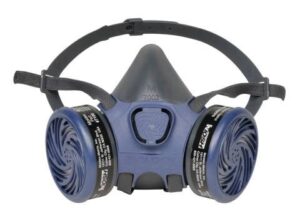The 2024 Grape Expectation symposium is a daylong series of lectures by professionals in viticulture (grape growing), enology (winemaking), and marketing. Lectures are designed to present new and relevant information to professionals and amateurs involved with grape growing or the wine industry. Pesticide recertification credits will be provided. Multiple tastings will be conducted during the symposium. Award-winning wines will be available for sampling in the N.J. Wine Showcase immediately following the symposium. This is the thirty-ninth year of the symposium. Come, learn, and spend time with your fellow N.J. wine professionals. Fore registration, please follow the instruction under the program detail.
Tree Fruit Edition
Seasonal updates on insects, diseases, weeds, maturity dates and cultural practices impacting only tree fruit.
Subscriptions are available via EMAIL and RSS.
Have A Say in Field Equipment Sanitation Research!
In an initiative to guide future solution and resources, the Specialty Crop Research Initiative (SCRI) has designed the Sanitation of Agricultural Field Equipment Questionnaire to begin the research process centered around field equipment sanitation.
The research will develop a more comprehensive understanding of the challenges associated with field equipment sanitation and work toward developing solutions that are effective, implementable and sustainable.
To introduce the survey and forthcoming research effort, Dr. Matt Grieshop Director at The Grimm Family Center for Organic Production and Research College of Agriculture, Food and Environmental Sciences Cal Poly, San Luis Obispo says,
“We are a group of agricultural research and extension professionals from across the United States that are curious about grower and agricultural professional perceptions about the importance of field equipment sanitation to mitigate the spread of organisms that pose human health, weed, plant pathogen or other risks.
Agricultural field equipment includes tillage implements, tractors, harvesters, cultivation equipment, trucks, trailers, sprayers, mowers, or any other piece of equipment that is shared across fields.
This information will be solely used to help frame future research questions and outreach activities. It will not be published or distributed in any form. Answering should take 5 minutes or less and is completely voluntary and anonymous.
If you have questions, comments or concerns contact Dr. Matt Grieshop at mgriesho@calpoly.edu
Thank you for sharing your experience. We truly appreciate the gift of your time and knowledge.”
Your participation is invaluable to future developments in the industry regarding food safety and equipment sanitation.
To contribute, visit here.
For any questions regarding this project, contact Thierry Besancon at thierry.besancon@rutgers.edu.
——
Thierry E. Besançon, PhD
Associate Professor / Extension Weed Science Specialist
Register Today for February 6-8, NJ Ag Convention, Educational Events, & Trade Show
SO MANY NEW OFFERINGS AND OPPORTUNITIES FOR 2024:
The 2024 NJ Ag Convention and Trade Show will be held Tuesday to Thursday, February 6-8 at Harrah’s Resort and Waterfront Conference Center 777 Harrah’s Blvd. in Atlantic City, NJ. Registration is required. The 3-day registration and VGANJ membership cost of $150 per farm for 2 persons and $25 for each additional person with your business. There is also a $75 per person daily entry fee option if you are not attending all 3 days and do not wish to be a member. All who register are welcome to attend this diverse and informative annual event. The convention is a cooperative effort with the Vegetable Growers Association of NJ, the NJ Department of Agriculture, and Rutgers Cooperative Extension. Rutgers Cooperative Extension worked with VGANJ and others to bring new educational events, activities, and offerings to the 2024 convention.
Some new and interesting events for 2024 for registered participants:
1. Tuesday mid-day “Lunch and Learn” trade show vendors presentations and free lunch for the first 50 people who sign up and obtain a ticket for this extra event at the registration booth on Tuesday morning. This event is sponsored by the exhibitors. Come see what exhibitors have to offer and find out what is new from industry.
2. Tuesday evening social and happy hour featuring a charity auction benefiting Shriners Hospital for Children with items to bid on from convention sponsors and trades show exhibitors.
3. Free skin screenings on Wednesday, February 7th from 9AM to 3PM with the Rutgers Cancer Institute of NJ. Space is limited and you must sign up in advance. To sign up see registration form and link: https://screennj.gomohealth.care/patient/enroll/
4. The New Jersey Farm Bureau Womens Leadership Committee is sponsoring a Wednesday afternoon workshop featuring guest speaker, Lorenda Oberman, American Farm Bureau Federation Womens Committee and a panel of NJ Farm Women Leaders.
5. A Thursday, All-Day On-Farm Food Safety Training. The cost is $50/per person, separate from the registration fee to the Convention and Trade Show. For more information, contact Brandi at (856) 451-2800 ext. 1. For online registration and more information see: https://go.rutgers.edu/mhqc3m5u
6. A Thursday, 1/2 day Worker Protections Standards Respiratory Protection Training, Fit Testing and Record Keeping Workshop. Space is limited to 30 participants and is a separate sign up for registered participants to the convention – so sign up soon. For more information and to register see: https://go.rutgers.edu/pesticideworkshop
For more information about the entire convention for registration, hotel, and educational events schedule see https://vganj.com/convention. Discounted room rates through the VGANJ Convention room block are available until January 29, 2024. See the VGANJ website for details. To sign up for tickets to the NJ Agricultural Society Luncheon on Wednesday or to get tickets for the Wednesday night awards banquet see: https://www.nj.gov/agriculture/news/hottopics/approved/topics231208.html
Eastern Viticulture and Enology Forum (EVEF) webinar series
The fourth edition of the Eastern Viticulture and Enology Forum (EVEF) webinar series is a collaborative effort between the Penn State Extension Grape and Wine Team and the land grant institutions: Cornell University, Rutgers University, Colorado State University, University of Georgia, Iowa State University, University of Maryland, and Ohio State University. Along with webinar presenters, several viticulture and enology Extension specialists will coordinate and serve as panelists throughout the EVEF series. The webinars are intended for vineyard owners, winery owners, vineyard managers, and winemakers. [Read more…]
Need Fit Testing for Your Respirator? Workshop on February 8, 2024
WORKSHOP: WPS RESPIRATORY PROTECTOIN TRAINING, FIT TESTING & RECORD KEEPING
Organizer and Host: PATRICIA HASTINGS Email: hastings@njaes.rutgers.edu
Thursday, February 8, 2024 at 9:00 AM – 1:00 PM (PRE-REGISTRATION REQUIRED-SPACE LIMITED)
LIMITED)
As part of the 2024 New Jersey Agricultural Convention and Trade Show, Rutgers Cooperative Extension is hosting educational sessions and workshops on Tuesday, February 6 through Thursday, February 8 at Harrah’s in Atlantic City. On Thursday morning pesticide applicators have a tremendous opportunity to be trained in respirator safety and fit testing. This workshop requires a separate registration (see instructions below to register) along with registration with VGANJ for the convention and trade show (available online or in person at the registration desk in the trade show area). For total list of educational events at the convention click here for Rutgers Educational Sessions. For more information about registering for the convention scroll to the bottom of the page on the Vegetable Growers Association of NJ’s Website.
Workshop Description: Revised WPS requires that agricultural employers provide all handlers (including family members) using a pesticide which requires respiratory protection with:
1) medical evaluation
2) fit testing of all tight-fitting respirators and
3) training per the requirements of 40 CFR 170.507 (b)(10).
This workshop aims to build the capacity of NJ agricultural establishments to protect their pesticide handlers from respiratory hazards. At this workshop, growers/applicators/their employees will receive class instruction and hands-on training in how to correctly select respiratory protection using the pesticide label statements of products used on their farm, train, and fit test others; and document the results to meet the requirements of the Revised WPS in NJ. Participants will be trained in pairs in how to properly conduct a qualitative fit test so that they can perform fit tests on the farm for as many masks and applicators as needed on their own. In rare cases, pesticide labels require respirators that legally require quantitative fit testing. Quantitative fit testing will be performed for those participants that need it. Training in the use of quantitative fit testing will not be provided to participants.
Workshop Pre-Requisites:
• Registration is given priority to growers/applicators/and their employees needing to expand capacity in respirator training, fit testing, and recordkeeping. Limited to the first 30 participants registering.
• Prior to fit testing or using a respirator, OSHA requires that the respirator user be medically evaluated. Each applicant must submit with their registration form a fully completed medical clearance by a physician or other licensed health care provider per OSHA 29 CFR 1910.1910.134(e)(6)9i.
• ALL attendees must pre-register by completing the 4-part registration form (including Part 4). Use the QR Code (right) to register or go to https://go.rutgers.edu/pesticideworkshop
Part 1: Participant Information
Part 2: List of Pesticides Used Which the Pesticide Label Requires Respiratory Protection
Part 3: Fit Testing Pre-requisites
Part 4: Submitting Your Respirator Workshop Pre-Registration Form
Day of the Workshop:
1) participants must be clean-shaven; use no lotions, aftershave, or makeup; or wear jewelry that interferes with the respirator sealing surface; certain facial hair such as mustaches are acceptable if they do not interfere with the inhalation or exhalation valve function.
2) Must bring respirator(s) they wish to be fit tested with fitted with N, R, or P filters; other makes models, and sizes of respirators will be available if fit cannot be achieved. Ordering information will be provided.
3) Each participant will receive a Workshop Certificate plus a completed “Fit Test Record” and “Respirator Training Record” form and wallet card.
PRESENTERS:
Respiratory Protection for Pesticides, Patricia D. Hastings, Rutgers Pesticide Safety Education Coordinator
Medical Evaluation and Fit Testing, Robin Tutor-Marcom, PhD, Director, NC AgroMedicine Institute
NJDEP PESTICIDE CREDITS FOR ATTENDEES: CORE-8 CREDITS
